

William Stopford
The cars axed in 2025 that we'll miss the most
2 Days Ago
The basic Hyundai Tucson lacks the flashy highlights of the Highlander, but it's still a fundamentally good car.
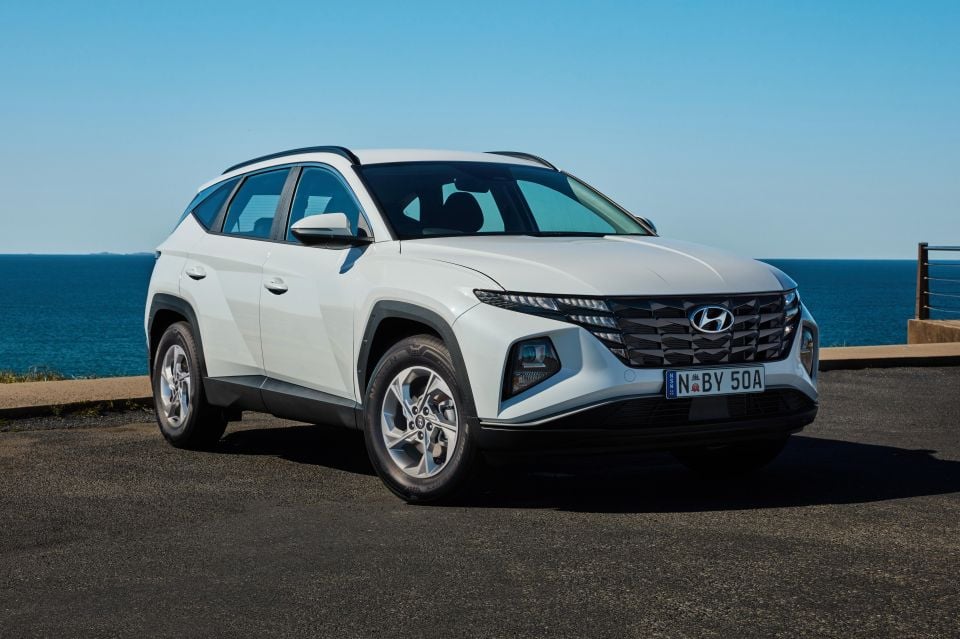
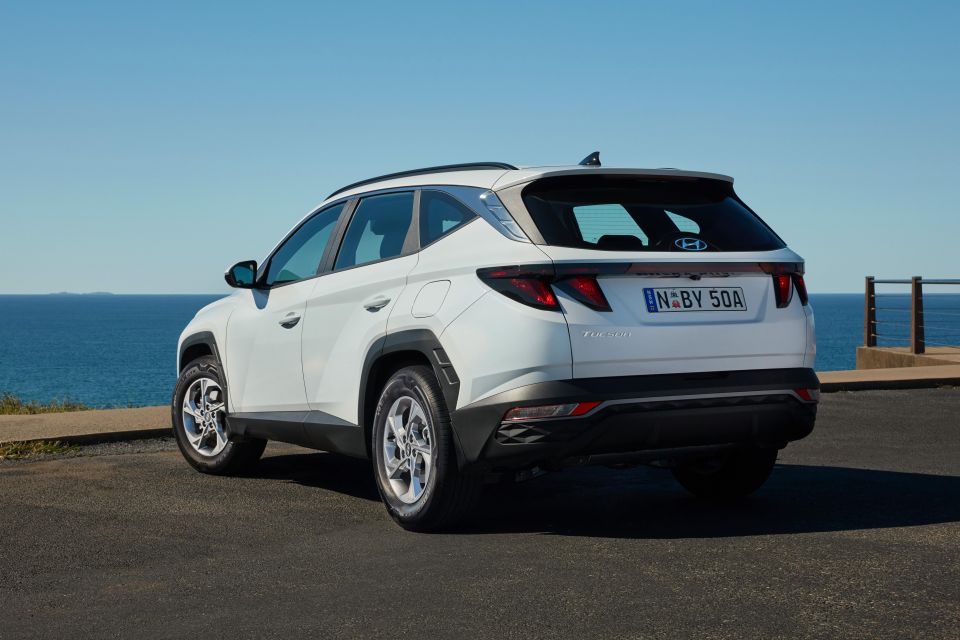

Contributor
New from
$29,640
excl. on-roads

Contributor
New from
$29,640
excl. on-roads


Contributor
New from
$29,640
excl. on-roads

Contributor
New from
$29,640
excl. on-roads
Quickly see how this car stacks up against its competition. Select any benchmark to see more details.
Where expert car reviews meet expert car buying – CarExpert gives you trusted advice, personalised service and real savings on your next new car.
The range-topping versions of a new car garner all the headlines, but you can arguably learn a lot more by driving the base model.
With no frills or fripperies to hide behind, entry-level cars reveal whether the fundamentals are good, or whether the fancy stuff that headlined launch stories, press releases, and social media posts is window dressing.
Enter the 2021 Hyundai Tucson.
The new Tucson is a sharper looker than its predecessor, and high-end models come loaded with huge screens, flashy technology, and a raft of features nicked from the world of premium motoring.
The base Tucson is a bit simpler. It’s still bigger than its predecessor, and it packs a full suite of active safety features, but it lacks the flashy design flourishes, dual-screen infotainment system, and premium touches of the sexy Highlander.
It doesn’t even get a second name; it’s just called the Tucson.
How does Hyundai’s new mid-sized SUV stack up stripped of its high-end features?

The new-gen Tucson is a bigger, higher-end crossover than its predecessor, and its price has risen accordingly.
The car on test here is the cheapest model in the range, priced at $34,500 before on-road costs – up $2360 on the equivalent variant in the outgoing range.
New for 2022 is the N Line package, priced at $3500 on the entry Tucson.
Although it ups the starting price to $38,000 before on-roads, the package gets you 19-inch alloys, sport seats, LED head- and tail lights, leather and suede trim, a 10.25-inch digital instrument cluster, and black interior headlining.
It wasn’t fitted to our tester, and likely won’t be hitting local showrooms for a number of months but it’s an options box that may be well worth ticking. More on that to come.
The model above the Tucson in the range, the Tucson Elite, kicks off at $39,000 before on-road costs, and adds the option of diesel or turbocharged petrol power with all-wheel drive, but that’ll send you well into the $40,000 bracket.
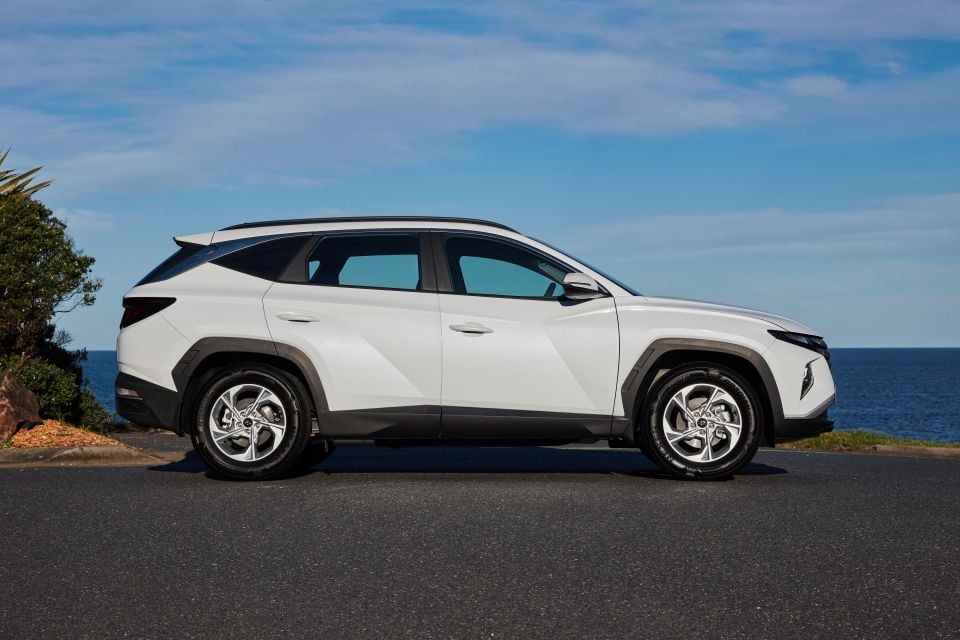
Buy your new car without the stress. It's fast, simple and completely free.

Great service from Travis and team, second time I have used this business would not hesitate to recommend them to anyone
Craig C.
Purchased a Ford Ranger in Sunshine Coast, QLD
CarExpert helped Craig save thousands on his Ford Ranger, now let us save you on your next new car.
Find a dealStandard kit in the base Tucson includes 17-inch alloy wheels, black body cladding, LED daytime running lights, and automatic halogen headlights.
Inside, there’s an 8.0-inch touchscreen infotainment system with wireless Apple CarPlay and Android Auto, a 4.2-inch colour trip computer, a leather-wrapped steering wheel and shifter, as well as grey and black cloth upholstery.
Regardless of model, the Tucson has a full-sized spare wheel, a reversing camera and parking sensors, tyre-pressure monitoring, and powered lumbar for the driver.
Moving up to the Elite improves on that list with a 10.25-inch touchscreen infotainment system with factory satellite navigation, 18-inch alloy wheels, a powered driver’s seat, heated front seats, front parking sensors, keyless entry and start, leather trim, and rear privacy glass.
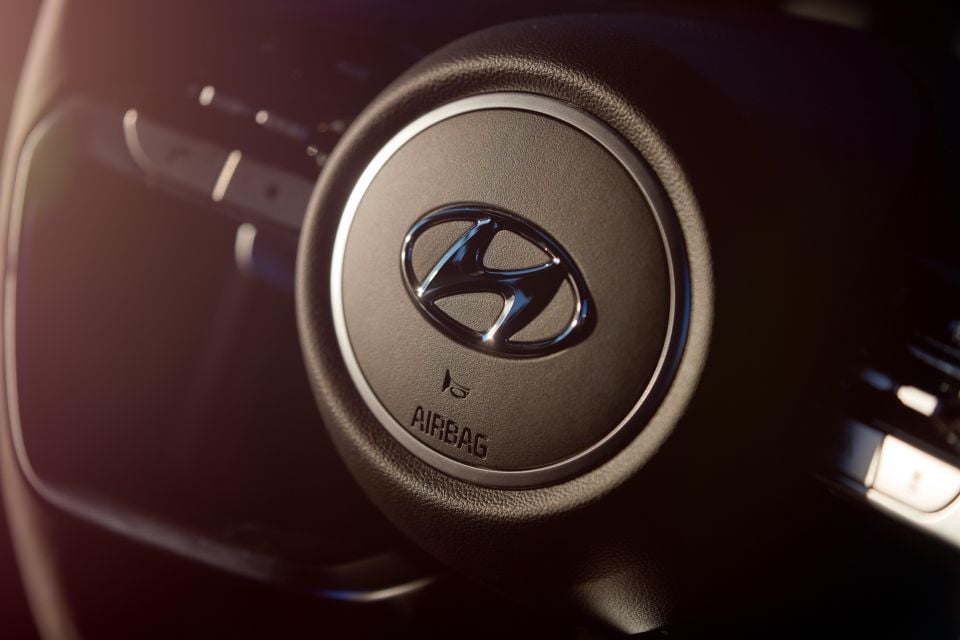
The 2021 Hyundai Tucson hasn’t been crash tested by ANCAP or Euro NCAP.
We know, however, it offers the latest in Hyundai’s driver assist and active safety technology.
Key safety features from the base Tucson up include:
Features available on higher grades include a more advanced rear seat alert (Elite), front parking sensors (Elite), the Blind Spot View Monitor camera system (Highlander), parking collision avoidance assist (Highlander), a 360-degree camera system (Highlander), and Remote Smart Park Assist (Highlander Diesel).
The Tucson also gains a front-centre inflator as part of its suite of seven airbags.
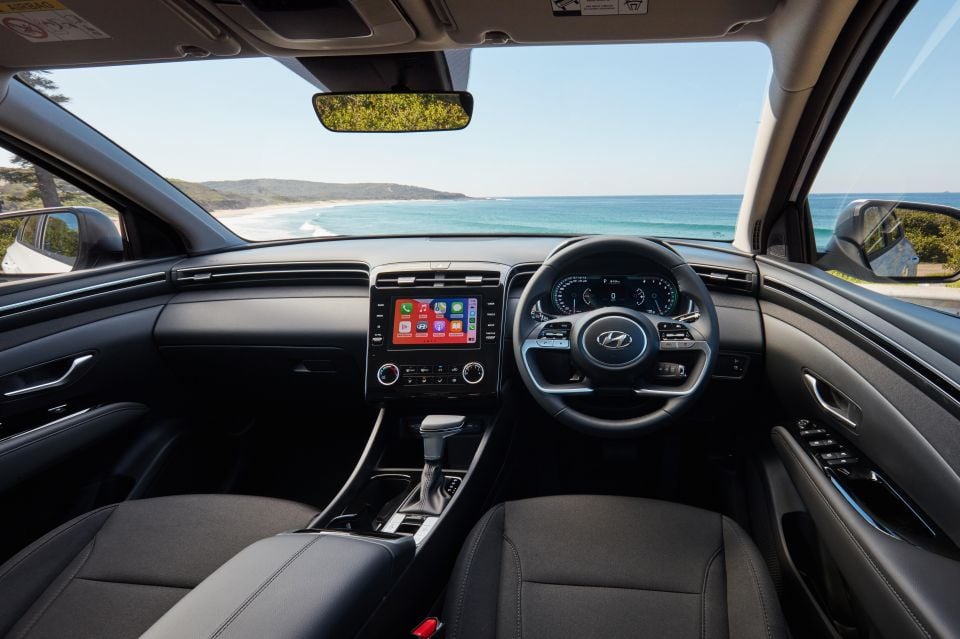
Some high-end cars feel like cheap cars dressed up to look expensive.
The Tucson is the opposite. It looks like a more expensive car dressed in dowdy clothes to give you a reason to pay more for the N Line package, Tucson Elite, or Tucson Highlander.
Like the exterior, the interior has been given a more modern look for 2022. The design is significantly more interesting than that of the utilitarian car it replaces, and the quality feels pretty good.

The elbow rests are soft and squidgy, the wheel is trimmed in smooth leather befitting its handsome design, and there are no rattles or squeaks from the dash, and the transmission tunnel doesn’t wobble from side-to-side when you press it with your knee.
That’s not to say it doesn’t feel like a base model. The cloth seats feel hard-wearing but aren’t particularly good to look at or tactile, and the manual air-conditioning controls scream rental special.
Then there’s the analogue gauges, which are a horrible mess of mismatched fonts, needles pointing in odd directions, and slightly too bold numbers.
There’s a small trip computer and digital speedo in the middle, thankfully, but that isn’t enough to save them. If you have an extra $3500 the N Line package brings digital instruments that would go a long way to making the Tucson feel a bit nicer.

Hyundai’s latest 8.0-inch infotainment system is simple to use, with handy shortcut buttons flanking it and a logical menu structure.
It misses out on factory satellite navigation, but features DAB digital radio to go with Bluetooth, AM/FM radio, USB and smartphone mirroring inputs.
Wireless Apple CarPlay has been a pain point with this system, dropping out far more frequently than is acceptable. Hyundai has previously said it’s working on a fix, and recent cars we’ve driven with the system have been much more reliable – it seems the software bugs afflicting it have been mostly squashed.
There’s a wireless phone charging pad hidden beneath the dashboard, along with dual front USB ports and a 12V outlet.
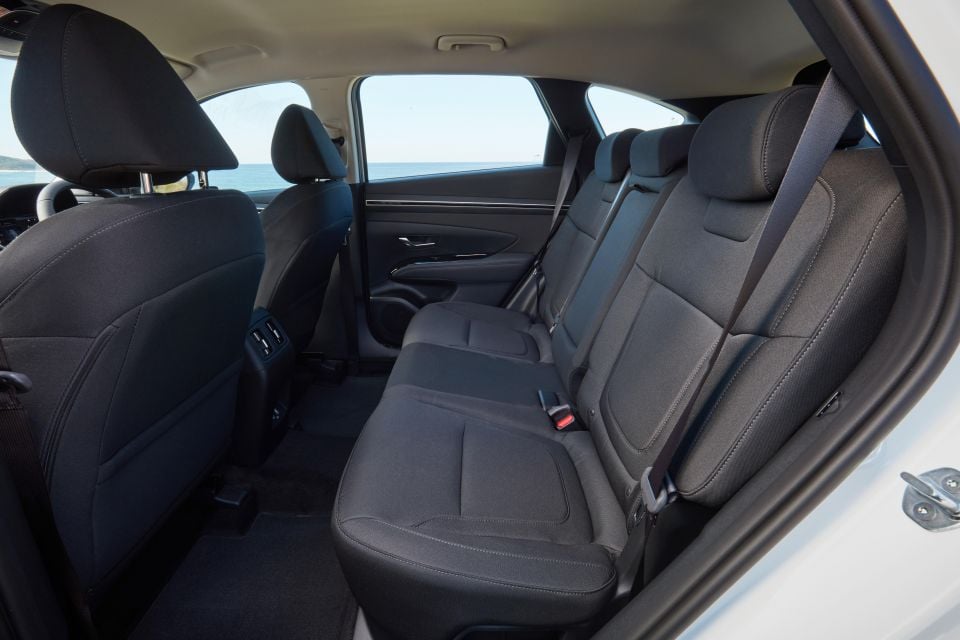
Along with the wireless charger there’s a key-sized slot under the dash, two big cupholders on the transmission tunnel, a deep under-armrest bin, and large door pockets with space for bottles.
The real beneficiaries from the Tucson’s growth spurt are rear passengers. The previous model was a bit tight back there, the new one has enough legroom and headroom to put it in contention for class-leader status.
With air vents, two USB-A ports, a fold-down central armrest, and door pockets with space for bottles, there’s nothing really to complain about back there.
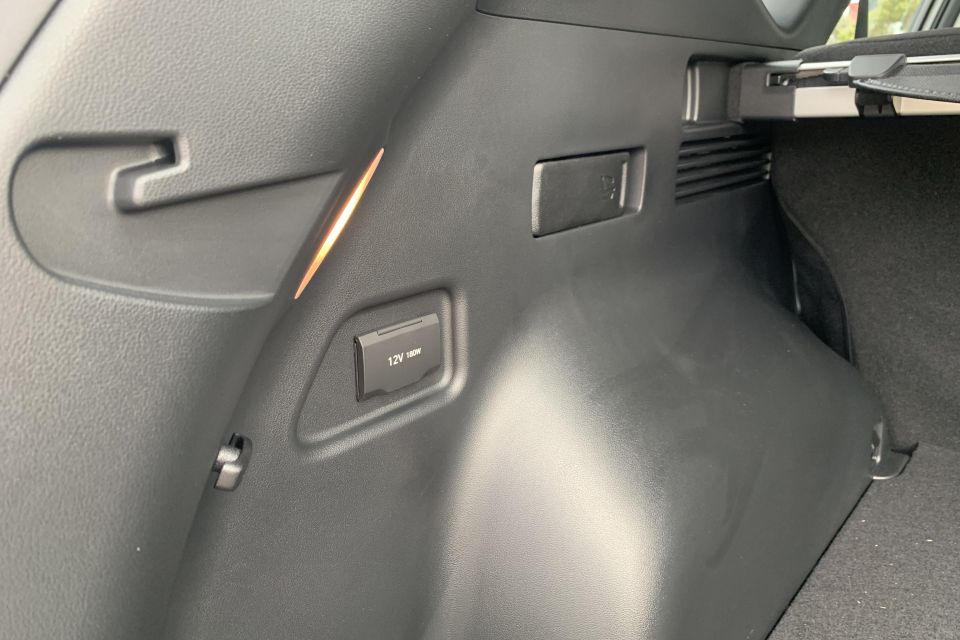
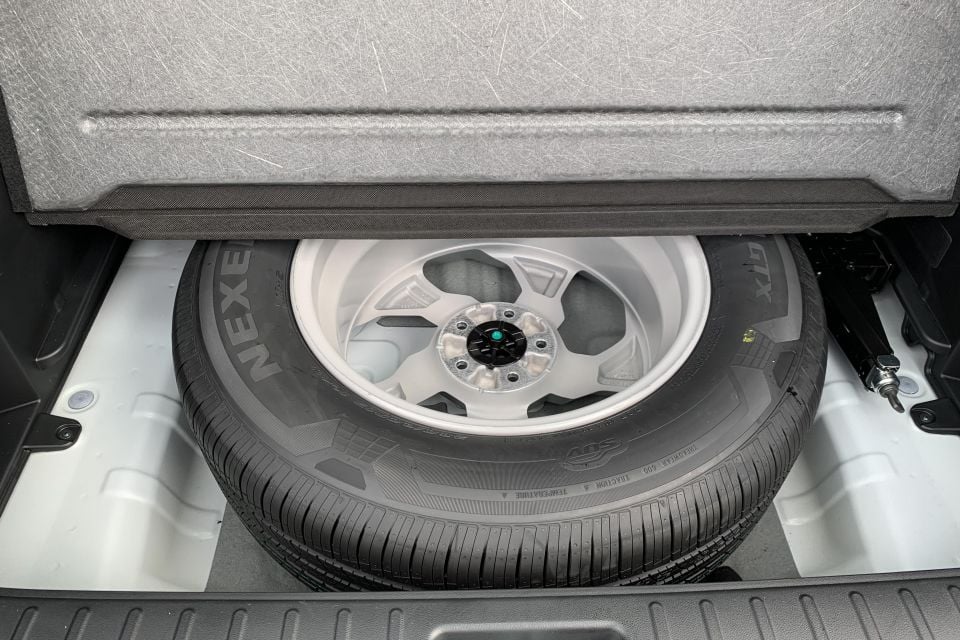
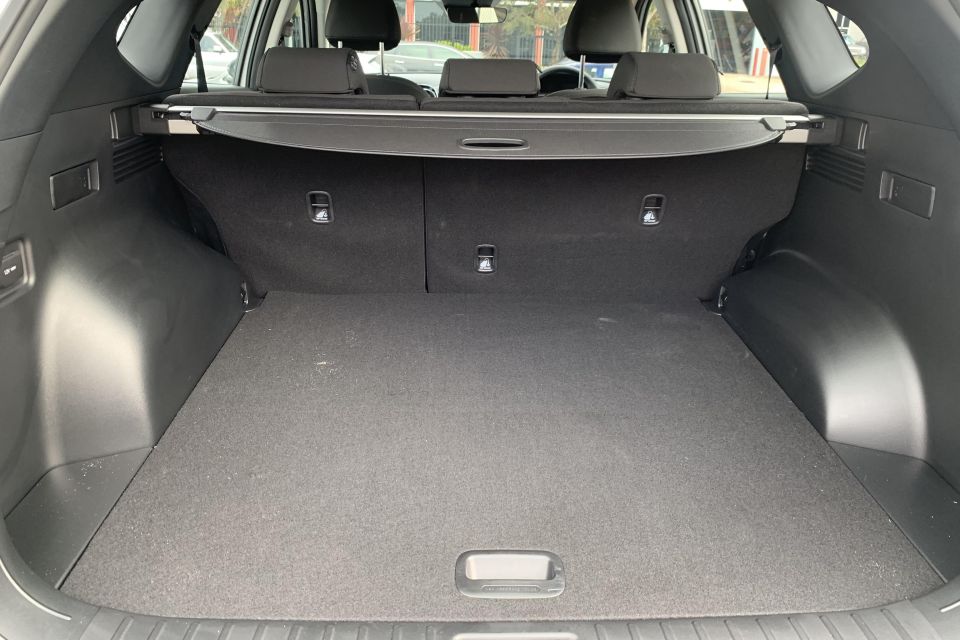
Although the Tucson’s profile is more dramatic from the outside, the window line is still tall and the cabin feels bright from the back seat. There are ISOFIX mounts on the outboard seats, and top tethers on all three rear seats.
Along with rear seat space, the bigger body of the new Tucson has brought about much more room in the boot.
The new Tucson’s boot measures a healthy 539L in five-seat configuration and a massive 1860L with the rear seats folded (VDA).
Oh, and Hyundai gives all Tucson buyers a full-sized spare. Nice.
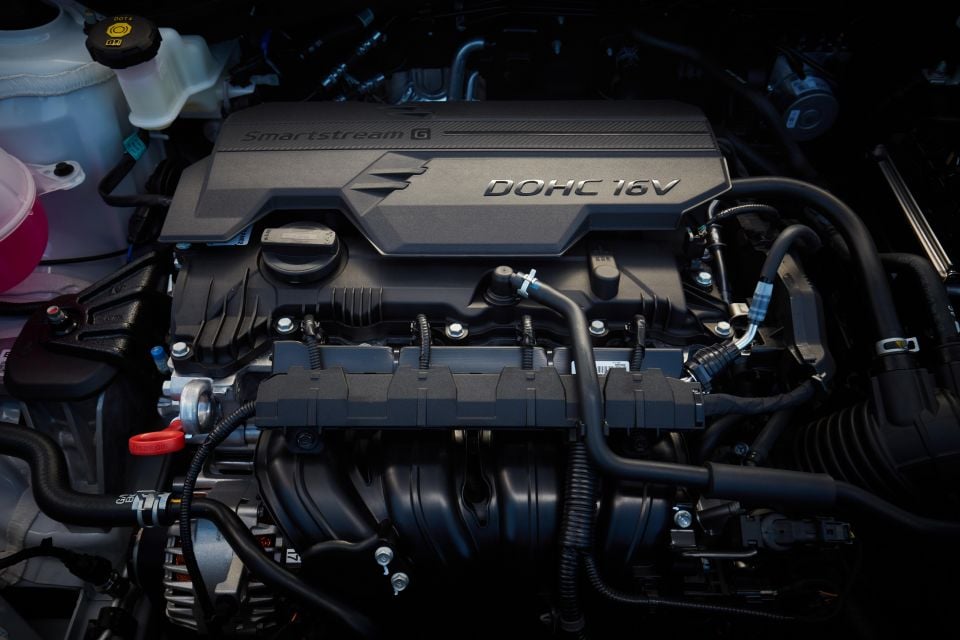
The base Tucson offers only a naturally-aspirated 2.0-litre four-cylinder petrol engine with 115kW of power and 192Nm of torque.
While it sounds like a carryover version of the previous base engine, the 2021 model gets a new electronically-controlled continuously-variable oil pump, which Hyundai says helps to improve fuel efficiency.
It has also moved to multi-point injection rather than the old ‘GDi’ motor’s direct injection, with outputs down by 7kW and 13Nm respectively.
The base 2.0-litre is mated with a six-speed automatic transmission as standard and drives the front wheels only.
Claimed fuel economy is 8.1L/100km on the combined cycle, we saw 9.0L/100km over a week skewed towards city driving. The fuel tank holds 54 litres, and the Tucson demands only 91 RON regular unleaded fuel.
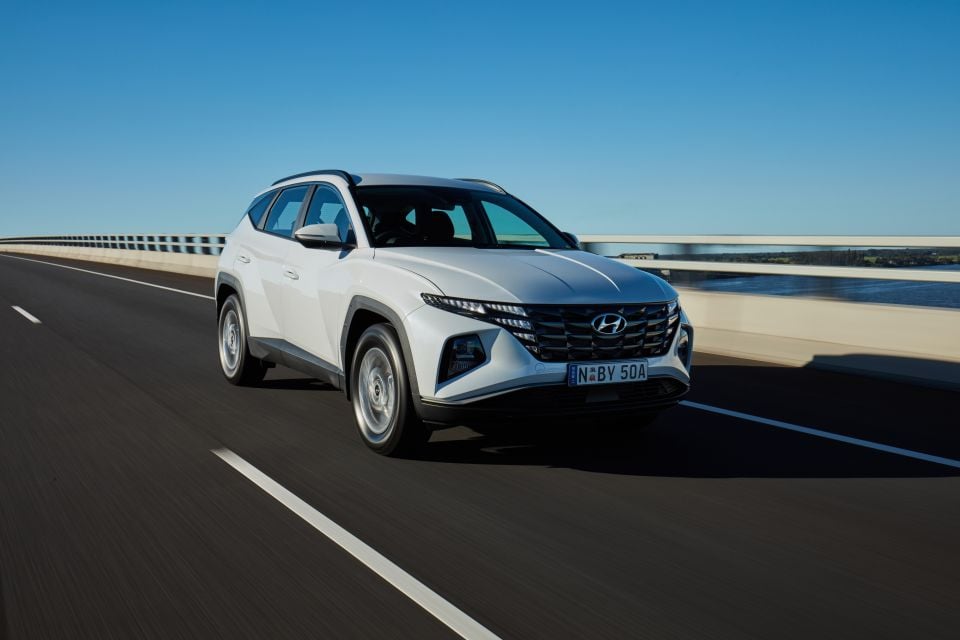
In a lot of ways, the Tucson feels more grown up than its predecessor. The engine isn’t one of them.
Like the base engine in the previous model, it’s never much more than adequate.
Put your foot down hard off the mark and it feels punchy enough, but it needs to be worked hard to really get moving at higher speeds – and when you do work it hard, it can be a bit noisy and coarse from behind the wheel.
It’s smartly geared for city driving. First and second are relatively short, so the Tucson is rarely lacking up to 60km/h. It does hunt around a bit in Normal mode, occasionally kicking down a bit too quickly when you breathe on the gas, but for the most part it’s decisive.

Up the speeds though, and the 2.0-litre quickly runs out of puff. Even with only one person on board it needs to be leant hard upon up hills at 100km/h, and you need to do some planning if you want to overtake slower traffic.
If you aren’t in a hurry it’s a quiet, refined cruiser. Hyundai says it’s worked to improve the sound deadening in the latest Tucson, and it makes for a car where you barely notice any road, wind, or engine noise on the highway.
The Tucson’s growth spurt makes it feel more solid than its predecessor. The ride, especially on the base 17-inch wheels, is compliant over the worst the city can throw at it, and the 85mm longer wheelbase helps it lope along on the highway.
Although the drive won’t set your heart racing, the bigger new Tucson doesn’t handle like a barge. Its steering is light at low speeds, and all-round visibility is decent – although the reversing camera and parking sensors are still welcome, as is the blind-spot warning in town.
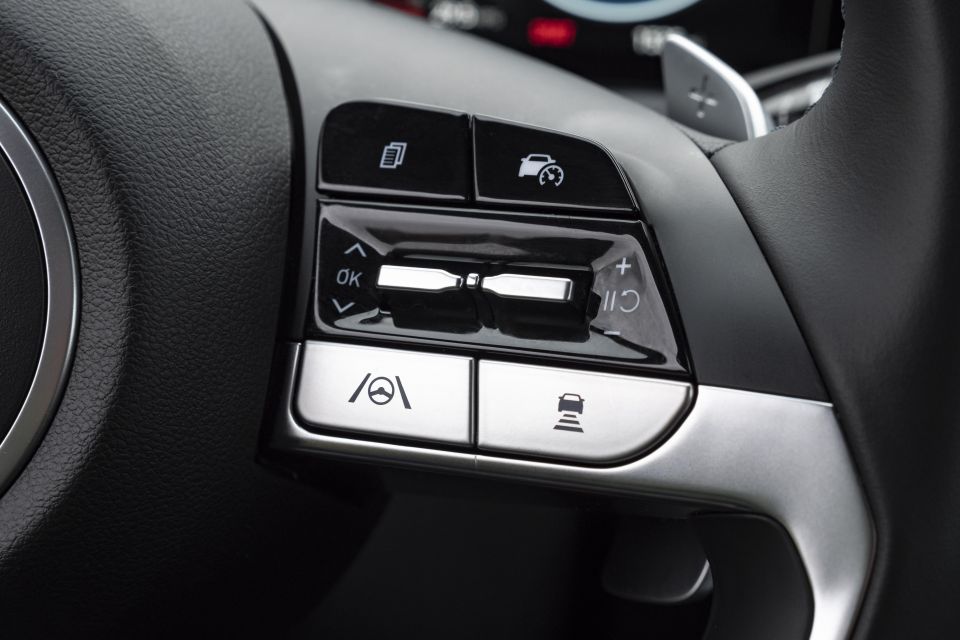
A clear link between the Tucson and the rest of the Hyundai range is clear on the handling front. Although it doesn’t have the same nimble feel as the Kona or the indomitable confidence of the bigger Santa Fe, the weighting of the controls and the Tucson’s solid handling balance are instantly recognisable.
Also shared with the rest of the Hyundai range is the over-eager lane-centring function, which tries way too hard to wrestle the steering wheel from your hands.
Thankfully it can be turned off independently of the lane-keep assist, which is far better at knowing its place, and only intervenes when required. Otherwise the Tucson’s electronic assists are well calibrated.
The adaptive cruise is smooth under brakes and doesn’t get spooked by cars in adjacent lanes, while the rear cross-traffic alert is like having a set of eyes in the back of your head coming out of unsighted parking spots.
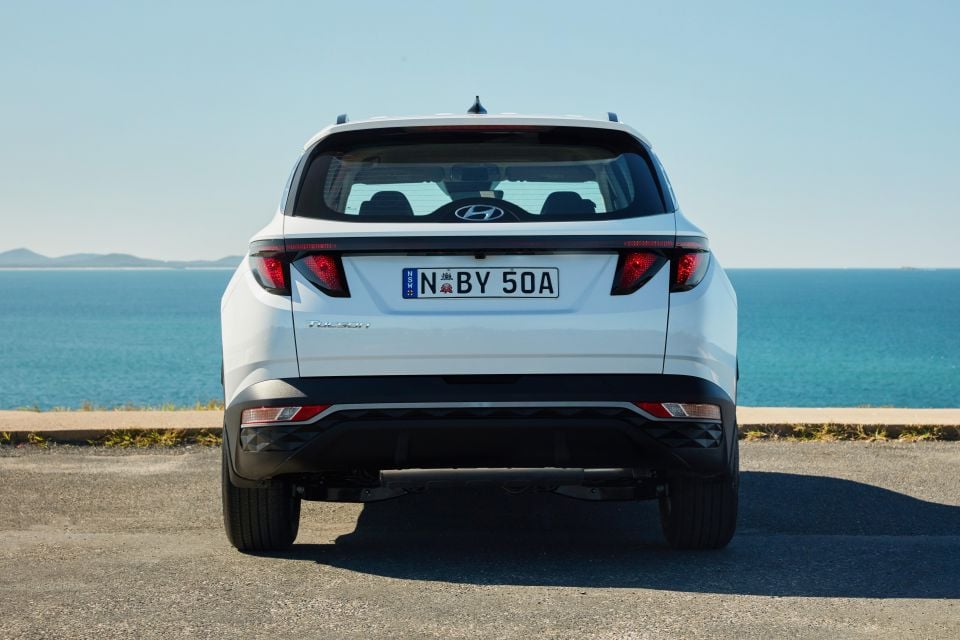
Where expert car reviews meet expert car buying – CarExpert gives you trusted advice, personalised service and real savings on your next new car.
The 2021 Hyundai Tucson is backed by a five-year, unlimited-kilometre warranty.
Maintenance is required every 12 months or 15,000km.
The first five services each cost $319, for a combined cost of $1595 for five years of servicing under Hyundai’s capped-price program.

The base Tucson is a very capable car, and represents a big step forward on its predecessor.
If you can look past a few clumsy parts of the base-model formula (ugly analogue dials) it could be argued you don’t really need much more in your family SUV.
That doesn’t mean you don’t want more, though, which makes the N Line package (or a more powerful Tucson Elite) worth a look.
Opting for the N Line pack fixes the instruments and decidedly average halogen headlights, and gives you bigger wheels, a more luxurious cabin, and a more desirable badge.
There’s nothing wrong with keeping it simple, but sometimes you want something more fabulous than fleet spec.
Where expert car reviews meet expert car buying – CarExpert gives you trusted advice, personalised service and real savings on your next new car.
Scott Collie is an automotive journalist based in Melbourne, Australia. Scott studied journalism at RMIT University and, after a lifelong obsession with everything automotive, started covering the car industry shortly afterwards. He has a passion for travel, and is an avid Melbourne Demons supporter.


William Stopford
2 Days Ago


Matt Campbell
2 Days Ago


William Stopford
3 Days Ago


Josh Nevett
5 Days Ago


CarExpert.com.au
6 Days Ago


Josh Nevett
7 Days Ago